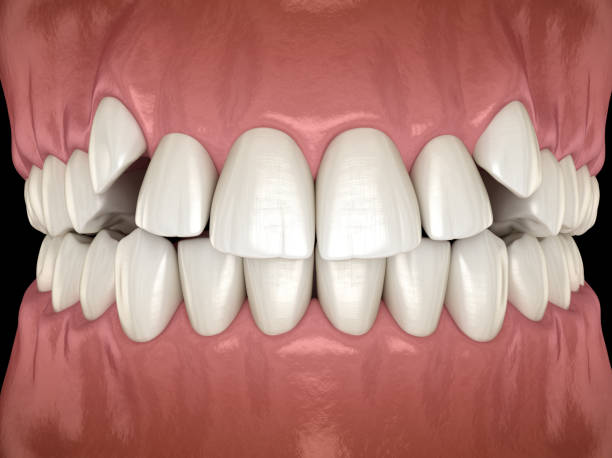When your dentist asks to see your canines, he probably isn’t talking about man’s best friend. “Canine” is actually another word for cuspid, one of the four pointed teeth on either side of your mouth.
This type of tooth is also sometimes called an “eye tooth” and plays a crucial role in your bite’s formation and function. Problems with your cuspid teeth can affect eating and speaking. While you can find information about dental anatomy on our website, only a dentist can diagnose and treat dental problems. Talk to your dentist if you think you have a problem with your cuspid teeth.
Location, Location, Location
Cuspids are found on both the upper and lower jaws between your incisors (flat front teeth) and premolars (small chewing teeth). If that sounds overly complicated, it may be easier to simply go to the mirror — a cuspid is the third tooth to the left or right of center when you smile. For most patients, they are also the last of the front teeth to erupt (around age 11 or 12) and help keep the rest of your teeth in the correct position as you grow.
What’s the Point?
You may have noticed that your pointed canines resemble fangs — that’s because, just like our friends in the animal kingdom, we use our sharpest teeth to tear our food while eating. They’re also incredibly strong, with longer roots than any other human teeth, making them particularly well-suited for this task.
And did you know your cuspids also help ensure that your bite aligns properly? Since canines are usually the first teeth to touch when closing your mouth, they help guide your jaw into place to guarantee a proper fit.
Negative Impact
Because your cuspids are so important to the spacing of your teeth and the ability to bite and chew, any complication in their development can be particularly serious. And unfortunately, after your wisdom teeth, cuspids are the type of tooth most likely to become impacted, or blocked from properly erupting. Depending on how severely a cuspid tooth is impacted, your dentist may recommend:
- Dental braces or another appliance made by your orthodontist to make additional room
- Removal of neighboring tooth or teeth to allow your cuspid to emerge
- Tooth extraction of the cuspid (in extreme cases)
If after assessing all dental treatment options your dentist decides your cuspid must be extracted, he or she will likely also recommend treatment to shift the remaining teeth to fill the void.
The good news for adults is, your cuspids have probably already erupted — hopefully without problems. But anyone with children should pay special attention to the development of those four little “fangs” as kids approach their 11th birthday. Remember, adults and children alike need to visit the dentist regularly to ensure the health of every single tooth to keep them smiling for years to come.

